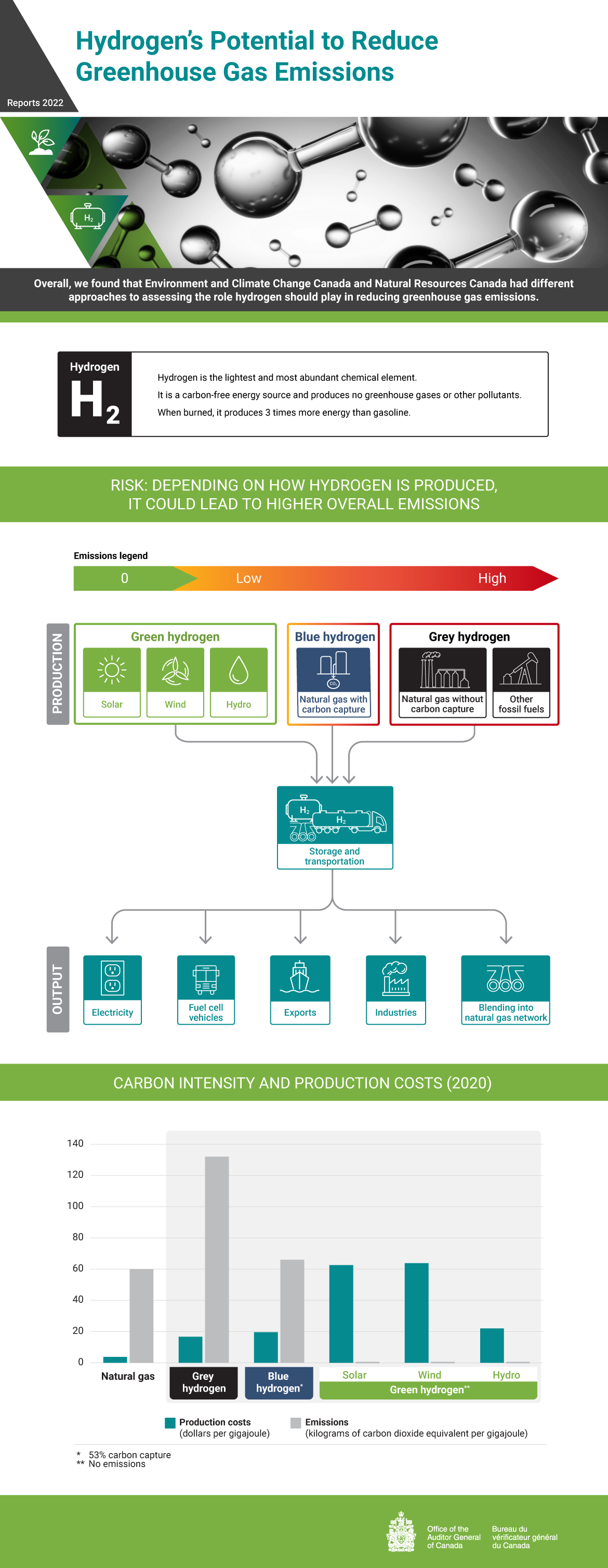Report 3—Hydrogen’s Potential to Reduce Greenhouse Gas Emissions—Infographic

Text version
This infographic presents findings from the 2022 audit report on hydrogen’s potential to reduce greenhouse gas emissions.
Overall, we found that Environment and Climate Change Canada and Natural Resources Canada had different approaches to assessing the role hydrogen should play in reducing greenhouse gas emissions.
Hydrogen is the lightest and most abundant chemical element. It is a carbon-free energy source and produces no greenhouse gases or other pollutants. When burned, it produces 3 times more energy than gasoline.
There is a risk that, depending on how hydrogen is produced, it could lead to higher overall emissions.
Green hydrogen is produced using wind, solar, and hydro power. Green hydrogen has the lowest emissions during its production.
Blue hydrogen is produced with natural gas with carbon capture and has low to high emissions during its production.
Grey hydrogen is produced with natural gas without carbon capture or with other fossil fuels. Grey hydrogen has the highest emissions during its production.
Once it is produced, hydrogen is stored and transported to where it will be used. It can be used to generate electricity and to power fuel-cell vehicles. It can be used in exports and in industries. It can also be blended into the natural gas network.
The production costs and carbon intensity vary with the different types of hydrogen.
In 2020, natural gas cost $3.79 per gigajoule to produce, and it produced emissions of 60 kilograms of carbon dioxide equivalent per gigajoule.
Grey hydrogen cost $16.70 per gigajoule and produced emissions of 132 kilograms of carbon dioxide equivalent per gigajoule (2.2 times the emissions from natural gas).
Blue hydrogen with 53% carbon capture cost $19.60 per gigajoule and produced emissions of 66 kilograms of carbon dioxide equivalent per gigajoule (1.1 times the emissions from natural gas).
Green hydrogen produced using solar power cost $62.60 per gigajoule and produced no emissions.
Green hydrogen produced using wind power cost $63.80 per gigajoule and produced no emissions.
Green hydrogen produced using hydro power cost $22.00 per gigajoule and produced no emissions.